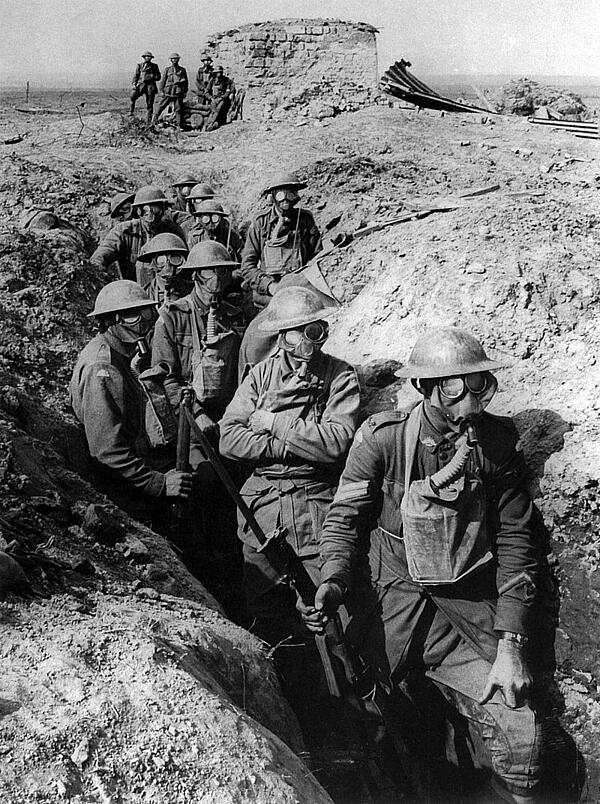Gas Attack in World War One
While artillery and machine guns provided a backdrop of almost unbearable noise in the trenches on the Western Front, perhaps the most fears weapon used during World War One was poison gas.
The most terrifying aspect of gas was its method of death; while artillery may result in an instant death, poison gas could leave soldiers in agony for days before eventually taking their life.

Soldiers who had experienced trench warfare for months or even years would quickly attune themselves to the sound of gas attack warning sirens, and would put their respirators on very quickly. While not particularly effective, they did develop rapidly during the war and did save many lives. The more experienced soldiers also realised that it would be fatal to dive into a shell hole during an attack as the gas was heavier than air, and so would sink down.
H S Clapham, a British soldier fighting on the Western Front, wrote about his experiences of a gas attack upon his return home:
“At 6.0 p.m. the worst moment of the day came. The Huns started to bombard us with a shell, which was new to us. It sounded like a gigantic firecracker, with two distinct explosions. These shells came over just above the parapet, in a flood, much more quickly than we could count them. After a quarter of an hour of this sort of thing, there was a sudden crash in the trench and ten feet of the parapet, just beyond m, was blown away and everyone around blinded by dust. With my first glance I saw what looked like half a dozen bodies, mingled with sandbags, and then I smelt gas and realised that these were gas shells. I had my respirator on in a hurry and most of our men were as quick. The others were slower and suffered for it. One man was sick all over the sandbags and another was coughing his heart up. We pulled four men out of the debris unharmed. One man was unconscious, and died of gas later. Another was hopelessly smashed up and must have got it full in the chest.”
Click on the links below for more information on gas attacks during World War One:
MLA Citation/Reference
"Gas Attack in World War One". HistoryLearning.com. 2026. Web.
